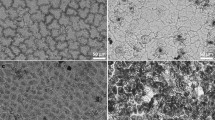Abstract.
Penetration of calcium chloride across astomatous cuticular membranes (CMs) isolated from leaves of Pyrus communis L. has been studied. Penetration was a first-order process when calcium chloride concentrations ranged from 2 g l−1 to 10 g l−1. Rate constants were increased 10-fold by adding wetting agents but they did not depend on temperature. The accelerators tributyl phosphate and diethyl sebacate had no effect on rates of penetration. Increasing humidity over the salt residue on the CMs from 50 to 90% increased rate constants by about 2-fold. Extracting cuticular waxes from pear leaf CMs increased rate constants by factors of 2 to 3, depending on humidity. Leaf CMs from Malus domestica Borkh., Populus alba L., Stephanotis floribunda Brongn. and Schefflera actinophylla (Endl.) Harms were also permeable to CaCl2. Highest rate constants were observed with poplar CMs while Schefflera CMs exhibited the lowest permeability. By comparing these results with the well established transport properties of the lipophilic pathway it is concluded that calcium chloride hexahydrate penetrated cuticular membranes via aqueous pores.
Similar content being viewed by others
Author information
Authors and Affiliations
Additional information
Received: 14 December 1999 / Accepted: 31 March 2000
Rights and permissions
About this article
Cite this article
Schönherr, J. Calcium chloride penetrates plant cuticles via aqueous pores. Planta 212, 112–118 (2000). https://doi.org/10.1007/s004250000373
Issue Date:
DOI: https://doi.org/10.1007/s004250000373




